 by our College Data Analytics Team
by our College Data Analytics TeamBerkeley College - Woodland Park total enrollment is approximately 2,625 students. 1,745 are undergraduates and 32 are graduate students.
Male/Female Breakdown of Undergraduates
The full-time Berkeley College - Woodland Park undergraduate population is made up of 71% women, and 29% men.
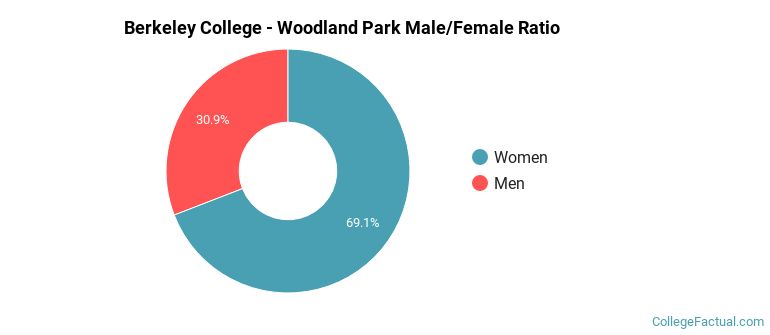
For the gender breakdown for all students, go here.
Berkeley College - Woodland Park Racial/Ethnic Breakdown of Undergraduates
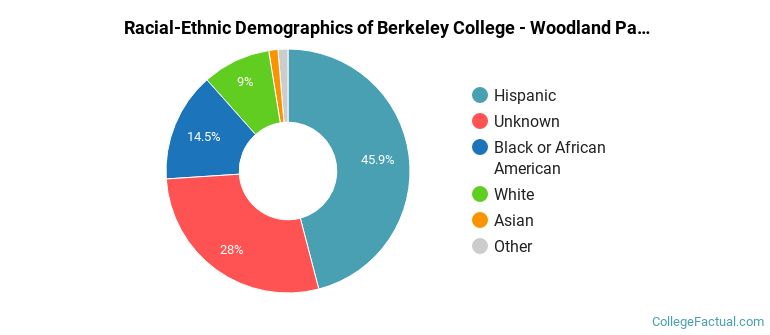
| Race/Ethnicity | Number |
|---|---|
| Hispanic | 763 |
| Unknown | 545 |
| Black or African American | 228 |
| White | 154 |
| Asian | 20 |
| Multi-Ethnic | 16 |
| International | 15 |
| Native Hawaiian or Pacific Islander | 4 |
See racial/ethnic breakdown for all students.
Male/Female Breakdown of Graduate Students
About 53% of full-time grad students are women, and 47% men.
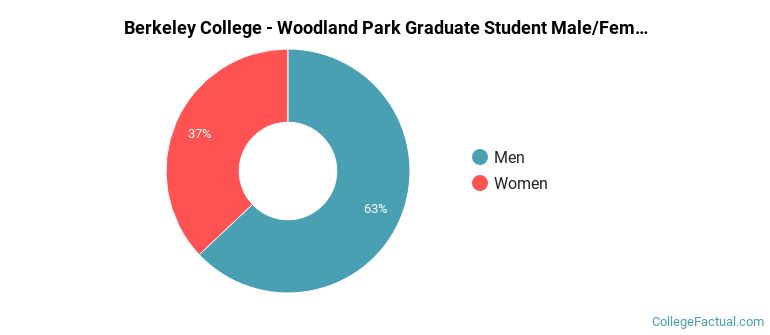
For the gender breakdown for all students, go here.
Berkeley College - Woodland Park Racial-Ethnic Breakdown of Graduate Students
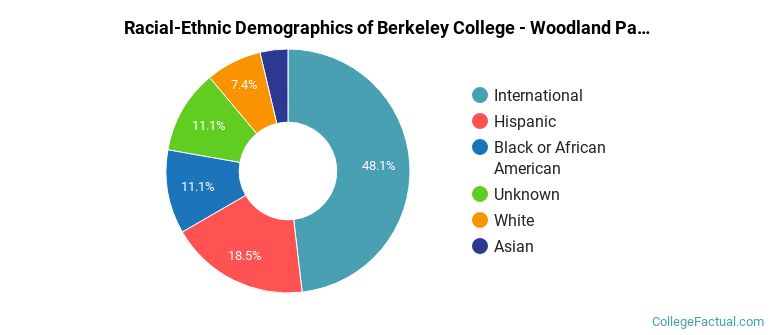
| Race/Ethnicity | Number |
|---|---|
| International | 12 |
| Hispanic | 9 |
| Unknown | 7 |
| Black or African American | 2 |
| White | 2 |
| Asian | 0 |
| Native Hawaiian or Pacific Islander | 0 |
| Multi-Ethnic | 0 |
See racial/ethnic breakdown for all students.
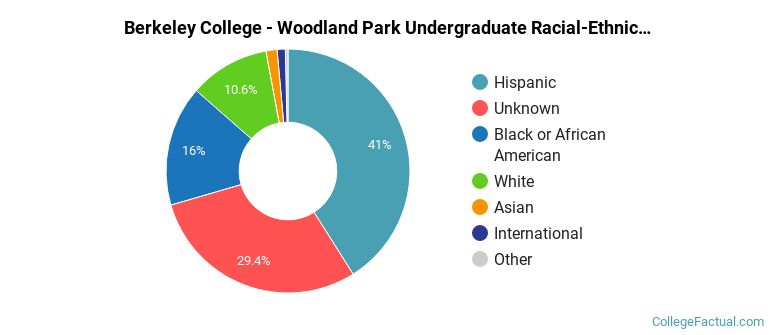
| Race/Ethnicity | Number |
|---|---|
| Hispanic | 1,048 |
| Unknown | 847 |
| Black or African American | 369 |
| White | 279 |
| Asian | 30 |
| International | 29 |
| Multi-Ethnic | 18 |
| Native Hawaiian or Pacific Islander | 5 |
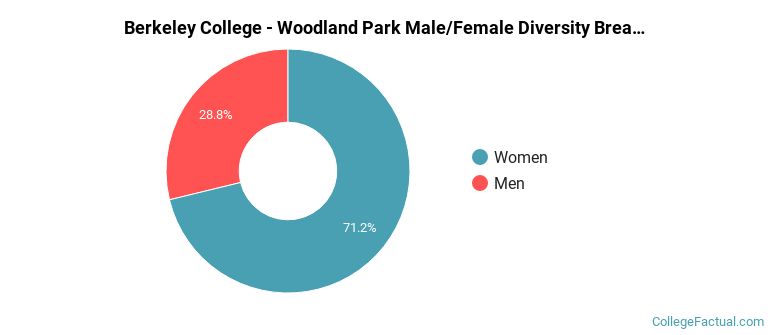
There are approximately 1,923 female students and 702 male students at Berkeley College - Woodland Park.
Berkeley College - Woodland Park ranks 1,898 out of 2,183 when it comes to geographic diversity.
1.48% of Berkeley College - Woodland Park students come from out of state, and 0.15% come from out of the country.
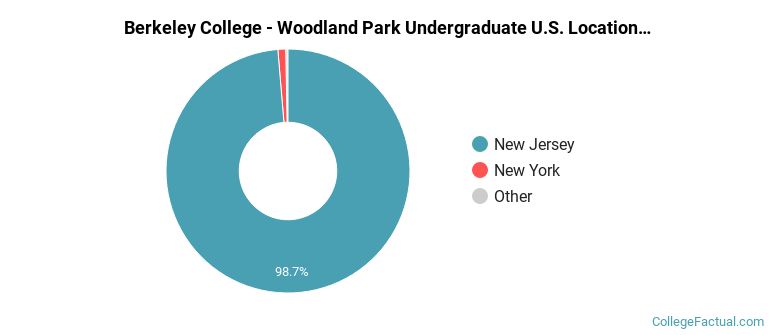
The undergraduate student body is split among 4 states (may include Washington D.C.). Click on the map for more detail.
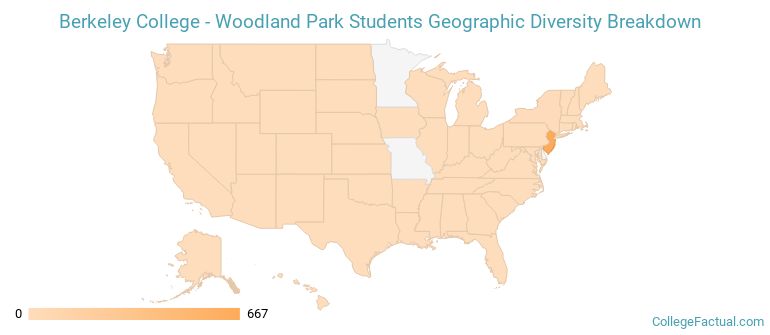
| State | Amount |
|---|---|
| New Jersey | 667 |
| New York | 7 |
| Florida | 1 |
| Pennsylvania | 1 |
| Alaska | 0 |
Students from 16 countries are represented at this school, with the majority of the international students coming from China, Turkey, and India.
Learn more about international students at Berkeley College - Woodland Park.
A traditional college student is defined as being between the ages of 18-21. At Berkeley College - Woodland Park, 35.58% of students fall into that category, compared to the national average of 60%.
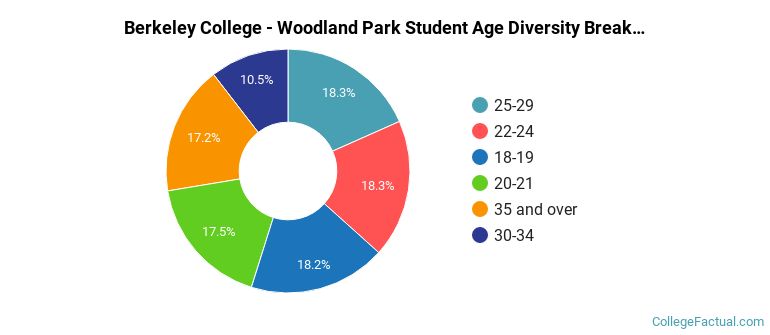
| Student Age Group | Amount |
|---|---|
| 25-29 | 635 |
| 22-24 | 634 |
| 18-19 | 630 |
| 20-21 | 607 |
| 35 and over | 594 |
| 30-34 | 362 |
| Under 18 | 0 |
Footnotes
*The racial-ethnic minorities count is calculated by taking the total number of students and subtracting white students, international students, and students whose race/ethnicity was unknown. This number is then divided by the total number of students at the school to obtain the racial-ethnic minorities percentage.
References
Department of Homeland Security Citizenship and Immigration Services
Learn more about how College Factual creates their Diversity Rankings.